Colonial connect
The backdrop of any Indo-British narrative is bound to be uncomfortable because the British were ruling us and it was a rather bitter partition.
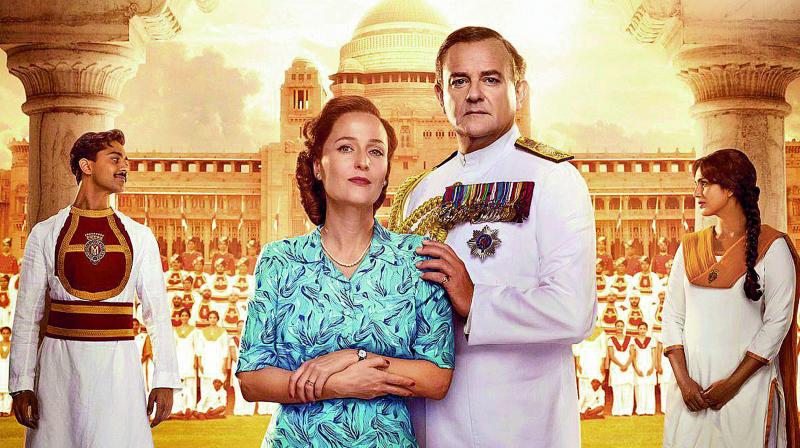
A little over halfway through 2017, and the year has already seen a number of films being made on the backdrop of pre-Independence India. Now, all of them may not directly deal with the freedom struggle, but the backdrop of the Indo-British conflict forms a significant part of the milieu in all the films. Victoria and Abdul is a nuanced retelling of Queen Victoria’s unlikely friendship with a young Indian clerk set to release later this year, while the recently-released The Black Prince is a direct portrayal of battle and conflict, showing the last Sikh prince’s struggle before being annexed by the East India Company. Viceroy’s House, which is set to release in August, takes one back to an India eagerly awaiting the morning of its freedom and shows the developments in Lord Mountbatten’s home. The films have put the focus firmly back on the intriguing, disturbed, and yet uncomfortably functional relationship the two countries have shared in the backdrop of colonialism.
The backdrop of any Indo-British narrative is bound to be uncomfortable because the British were ruling us and it was a rather bitter partition. As far as Indian history is concerned, they were the aggressors and we were the victims. That is the narrative in India at least. In popular Indian cinema, you have to take the sentiment of the masses into account. Otherwise, the film either gets burnt or tanks without a trace, and one stands to lose whatever money they had. And no filmmaker wants to take that chance. Films like Viceroy’s House, The Black Prince or Victoria and Abdul stand for a continued obsession with the topic more than a renewal. There have been films made consistently on this subject through the years, with the interest sparking every once in a while.
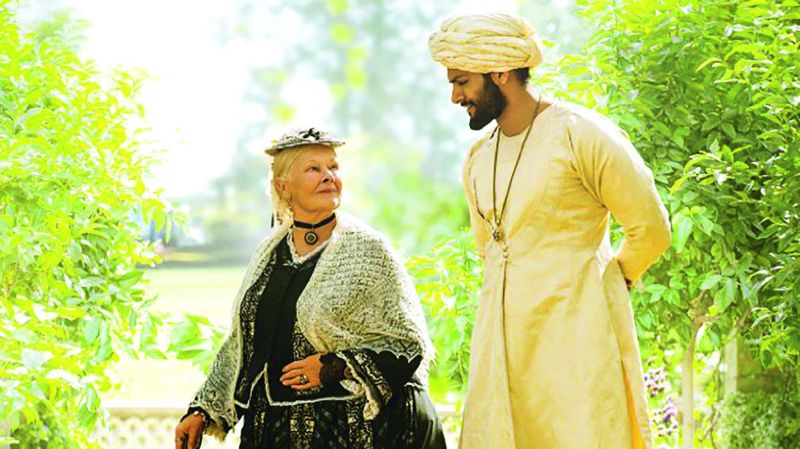 Victoria and Abdul is a nuanced retelling of Queen Victoria’s unlikely friendship with a young Indian clerk.
Victoria and Abdul is a nuanced retelling of Queen Victoria’s unlikely friendship with a young Indian clerk.
However, the Indian nationalistic portrayal in films, and especially that of the British-India conflict, is always biased towards Indian triumph, whether we admit it or not. On the one hand, there is still a lot of adulation and hero-worship that comes with colonialism. On the other, we still blame everything that is wrong with this country on them. There have been far less movies in Britain made about India, because ultimately it was a loss for them. Britain was an empire so vast that it wasn’t possible for the sun to set on the entire kingdom, they said. From there, they have been reduced to a few small islands, despite the economic power they hold today. That could well be the primary reason why there aren’t a lot of films or literature dedicated to India or its freedom struggle in Britain.
 Power play: The Black Prince is a portrayal of battle and conflict, showing the last Sikh prince’s struggle before being annexed by the East India Company.
Power play: The Black Prince is a portrayal of battle and conflict, showing the last Sikh prince’s struggle before being annexed by the East India Company.
Filmy nationalism in pre-Independence India
When it comes to Indian cinema, on the other hand, from the first full length Indian feature film, Raja Harishchandra, in 1913, till 1947, Indian cinema was essentially Indo-British cinema, since India was under the British rule. So, whatever progress happened technologically, happened under the British Empire. Understandably, no element of nationalism was officially allowed in Indian cinema before independence, which is quite why it was sugar-coated. However, even in this environment, filmmakers would take the occasional risk and patriotic elements would be slipped in. For instance, Kismet was a noir film starring Ashok Kumar, which was released pre-independence in 1943. Although the storyline was about a conman, there is a song in that movie — Aaj Himalay ki choti se, phir humne lalkara hai, door hato ai duniya walo, Hindustan hamara hai.
It was just a harmless song being sung in a school and there was no mention of the freedom movement. But that song became a hit number in the freedom struggle. Kavi Pradeep wrote that song, and he was one of the voices of the freedom movement during that time. It was just innocuous enough that it could fit into the movie, since it was just sung as a school song. The song took people over. The film became the biggest hit of the year and ran for 187 continuous weeks at Roxy Cinema in Calcutta. That was the longest running film till Sholay. So from 1943 to 1975, not one film could break that record. Just imagine the impact it had!
Sohrab Modi’s Sikandar (1941) was another delicate portrayal of the Indian struggle. He made a film on King Alexander reaching Indian shores where he confronts Porus. Sohrab himself played Porus, while Prithviraj Kapoor played Alexander. What Sohrab did was shape the narrative in a way that it portrayed it as a ‘gora versus Indian’ film, as if the Indians are fighting the Western forces. The dialogues were explosive, since Kamal Amrohi — a brilliant writer — penned them. The kind of bravado Porus shows when he challenges Alexander, at the start of the last leg of the freedom movement, made it a motivational film for the freedom struggle.
Post Independence hero-worship
The first colour film in 35 mm is Jhansi Ki Rani in 1953, which came out post Independence, and was based on the backdrop of the freedom struggle. Another Sohrab film, it was a landmark event in terms of Indian cinema, since till that point, there were 16 mm films being blown up to fit the 35 mm mark. One only has to look at the bravado of the Indian side in the film, as if the Rani vanquished the British. Historically, she did a lot of good work no doubt, but the heroic triumph of the protagonist showed in the film was stretching the truth. Post-partition, the sentiments of nationalism were even higher than they are today. Aside from Jhansi Ki Raani, there is also Tipu Sultan, which came out in 1959.
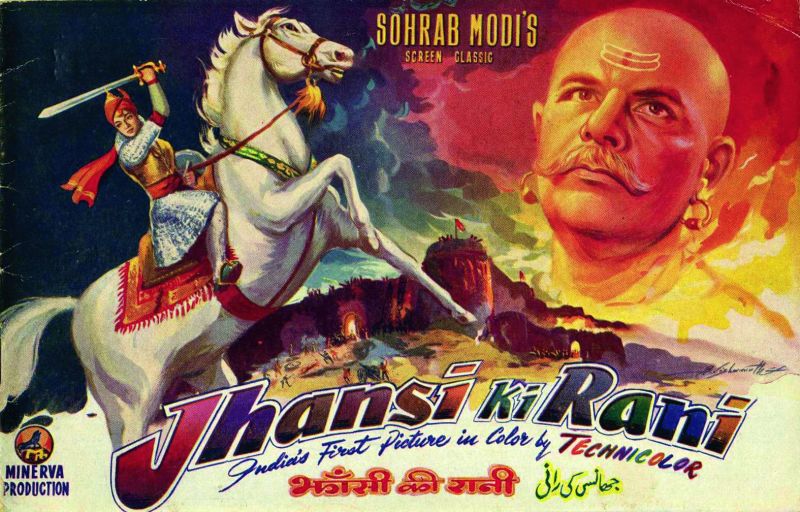 Battle cry: The first Indian colour film in 35 mm was Jhansi Ki Rani.
Battle cry: The first Indian colour film in 35 mm was Jhansi Ki Rani.
The film depicted the struggle of the ruler of Mysore, Tipu Sultan against the East India Company. Though he is vanquished in the end, his valiant struggle is emphasized throughout the film. And that has been the message throughout. A lot of films on the icons of the freedom movement have been made, Gandhi being one of them. But there was also a film on Subhash Chandra Bose by Shyam Benegal, several on Bhagat Singh and even B.R. Ambedkar. There have been historical films and there have been fictional films in the backdrop of the movement.
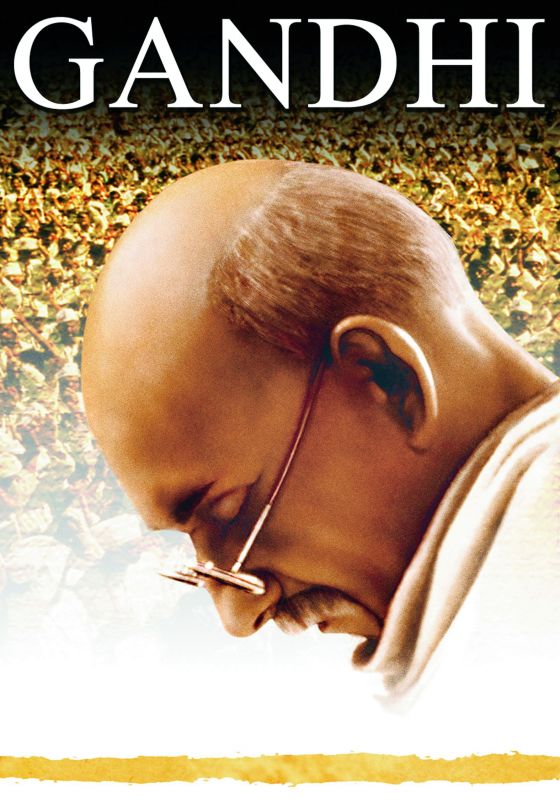 Accurate portrayal: Gandhi was an honest film that followed a path of historical perspective, which worked for both British and Indian audiences
Accurate portrayal: Gandhi was an honest film that followed a path of historical perspective, which worked for both British and Indian audiences
Creative licence
A film like Victoria and Abdul is not an Indian film and it aims towards the British audience more than the Indian audience and will have to satisfy both audiences with its narrative. Understandably, this is not the case with most commercial Indian films on freedom struggle. The idea of nationalism in India is indoctrinated within each one of us from a young age. If not our parents, it’s our history textbooks or schools that tell us about our struggle for freedom. So, any film that glorifies that becomes a film we want to see. And therefore the films almost always have Indian triumph at the climax. A pinnacle of a fictional film, where the boundaries of creative licence have been stretched is Mard, which released in 1985. It was Indian jingoism at its best with Amitabh Bachchan seeming virtually invincible.
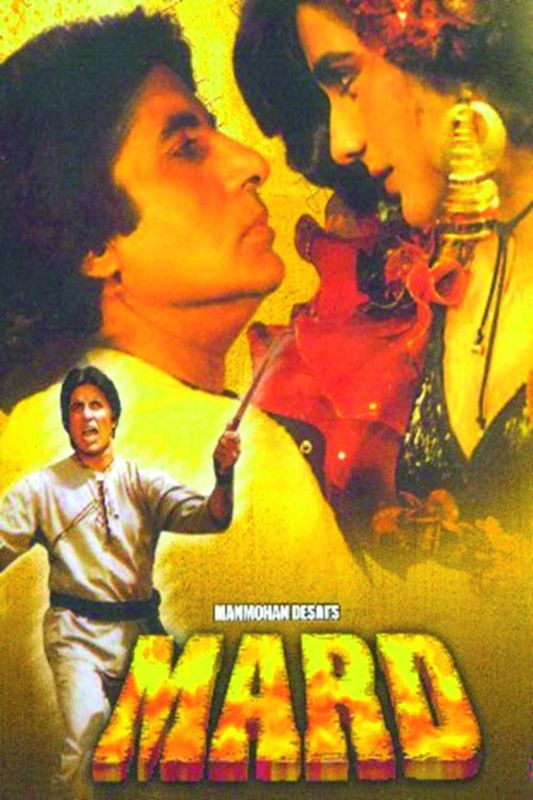 Mard, released in 1985, was Indian jingoism at its best with Amitabh Bachchan seeming virtually invincible. British or no British, he was going to conquer them all. He is shown facing tanks and bullets. His father, played by Dara Singh, uses a lasso to make an aeroplane skid to a stop.
Mard, released in 1985, was Indian jingoism at its best with Amitabh Bachchan seeming virtually invincible. British or no British, he was going to conquer them all. He is shown facing tanks and bullets. His father, played by Dara Singh, uses a lasso to make an aeroplane skid to a stop.
British or no British, he was going to conquer them all. In the film, he is shown facing tanks and bullets. His father, played by Dara Singh, uses a lasso to make an aeroplane skid to a stop. And this has applause ring out in the theatres. Amitabh is a superhero in that film. If you look at his character, it is obviously inspired by the comic book hero Phantom. He has a horse and he has a dog in the film. The horse is Badal and the horse is Moti and the three of them walk all over the British. And how! There’s a sequence in the film where Amitabh is drunk and making fun of Lord Curzon, sitting on his statue and talking to him. And it was unanimously hailed as hilarious. And while none of the newspapers gave that movie a rating of over one or two stars, Mard became the second biggest hit of the year; the biggest being Ram Teri Ganga Maili.
Manmohan Desai, who made Mard, said in an interview before the film that people were going to think that Amitabh led India to freedom after watching this film. And the response was as overwhelming as he had predicted. Creative licence is allowed as long as the Indian aspect is glorified. In Mard, no one cared about the accuracy of the narrative. Everybody was applauding. The moment the historic aspect goes against the Indian psyche or the presumed Indian nationalism, there is a problem. As long as you don’t go against the Indian cultural supremacy, then it does not matter how much you stretch the facts. Even if you look at Lagaan, it’s the Indian triumph that got the applause. Had it not been that, there would be no story and the film would have tanked. So when it comes to popular cinema, the Indian ethos is taken into consideration. As an Indian audience, we want to see what we want to see and nothing other than that.
Sticking to the facts
While commercial cinema has stuck to this formula, there are some films which have provided a more neutral and balanced view of the Indo-British conflict. One great success in this theme was Gandhi. It was an honest film, made with a lot of conviction and it intelligently balanced the two civilisations’ aspirations so that it doesn’t become uncomfortable to either of them. It followed a path of historical perspective, which worked for both British and Indian audiences. That is why it became such a big hit globally and won so many Oscars.
Another such film is Shatranj Ke Khilari, which was directed by Satyajit Ray and was written by Premchand. The story is that of two Nawabs of Lucknow. But it is set in the backdrop of the British annexation of Awadh. Richard Attenborough, who directed Gandhi, played one of the lead characters in the film. And these were simple and mostly accurate portrayals of the times they documented. Merchant Ivory Productions, which was founded in 1961, came up with a number of films, which were quite accurate in their portrayal. Ismail Merchant was Indian and James Ivory was British. They made films that were authentic and they weren’t judgmental. They weren’t tilted to either perspective. Some of the films, which show an excellent balance in the portrayal of both Indian and British backdrops, include In Custody, Heat and Dust and Shakespeare Wallah.
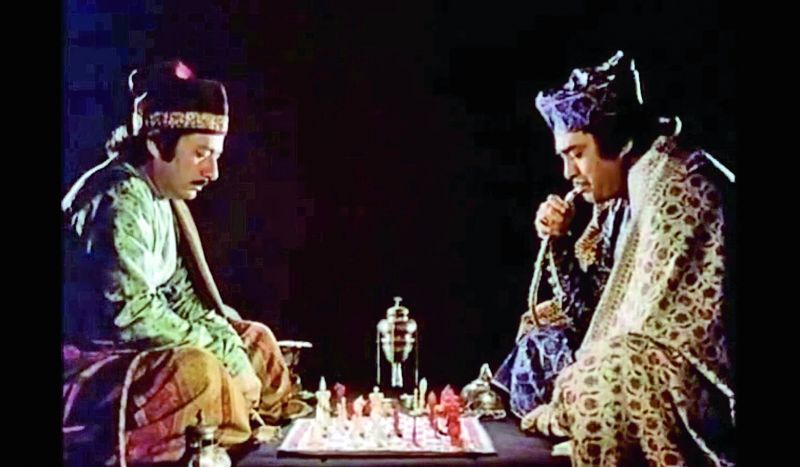 Game of fortune: Shatranj Ke Khilari, directed by Satyajit Ray, was written by Premchand
Game of fortune: Shatranj Ke Khilari, directed by Satyajit Ray, was written by Premchand
The theme of nationalism and India-British connections have been discussed even through films like Namaste London and Ramji Londonwaley, which dealt with the after-effects of colonialism, rather than give it a historical treatment. Nationalism is like opium. We are being ruled by a party today which has won on the basis of nationalism. It is the one thing that can trample all other ideologies and triumph. It is an ideology which caters to the lowest common denominator and gives them a sense of community power. That’s the reason why it has always been active in different countries and civilisations and will always find expression in film.
S.M.M. Ausaja is a film historian and author of Bollywood in Posters.
(As told to Dyuti Basu)

